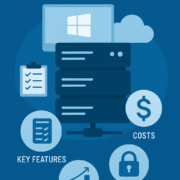The Impact of Unconventional Advertising and its Effectiveness
Unconventional advertising, a shift from traditional marketing strategies, incorporates creativity and innovation to captivate audiences in novel ways. As the advertising landscape evolves, marketers strive to capture consumer attention by standing out in the crowded spaces of both digital advertising and conventional channels. These non-traditional tactics, such as guerrilla marketing, experiential campaigns, and interactive digital content, aim to create memorable and impactful experiences for consumers. This paper explores the impact of unconventional advertising on effectiveness, examining how these strategies influence brand perception, consumer engagement, and overall marketing success.
Key Aspects of Unconventional Advertising:
1. Creativity
Creativity is one of the key aspects of unconventional advertising. Unlike traditional advertising, which often relies on standard formats and platforms like TV commercials or print ads, unconventional advertising thrives on innovative and unexpected approaches. Creative ideas are essential to grab consumers’ attention in a cluttered media landscape and create memorable experiences that resonate with the audience.
Creative advertising campaigns have the potential to generate buzz, spark conversations, and leave a lasting impression on consumers. By tapping into emotions, humor, or novelty, unconventional advertising can engage audiences in ways that traditional methods might not achieve. Additionally, creativity enables brands to differentiate themselves from competitors and establish a unique brand identity in the minds of consumers.
2. Cost-effectiveness
Unconventional advertising often focuses on achieving high impact at a low cost. This is done by leveraging creativity and innovation to make campaigns stand out and resonate with audiences in memorable ways. By using non-traditional media and unexpected placements, unconventional advertising can maximize visibility and engagement without the high costs associated with traditional advertising channels. This type of advertising often relies on viral marketing, social media, and experiential campaigns to generate buzz and word-of-mouth, reducing the need for expensive, widespread media buys. The emphasis on originality and audience engagement can lead to cost-effective campaigns that achieve significant reach and impact.
3. Surprise and Intrigue
Unconventional advertising relies on creating a sense of surprise and intrigue to capture the audience’s attention. By presenting unexpected or unconventional concepts, it breaks away from the norm and engages the audience in a unique way. This approach often involves innovative storytelling, unusual visuals, or interactive elements that make the audience question what they are seeing. The goal is to create a memorable and thought-provoking experience that encourages viewers to share the campaign with others, thus extending its reach and impact. By generating curiosity and sparking interest, unconventional advertising can leave a lasting impression on its audience.
4. Viral Potential
Unconventional advertising often aims to harness the viral potential of a campaign by creating content that is shareable and likely to spread rapidly across social media platforms and other online channels. This is achieved through engaging and surprising content that resonates with audiences, encouraging them to share it with their friends and followers. When a campaign goes viral, it can reach a large audience quickly, amplifying its impact far beyond its initial target. This type of advertising relies on the power of word-of-mouth and social sharing to extend its reach organically, allowing it to generate significant buzz and awareness without the need for large advertising budgets.
5. Interactivity
Unconventional advertising often emphasizes interactivity to engage audiences on a deeper level. By creating campaigns that involve active participation from the audience, such as interactive websites, games, or immersive experiences, brands can foster a sense of connection and involvement. Interactivity can make the advertising experience more memorable and enjoyable for viewers, encouraging them to spend more time with the campaign and share their experiences with others. This approach can also provide valuable data and insights about audience preferences and behaviors, allowing brands to tailor future campaigns for even greater impact.
Effectiveness of Unconventional Advertising:
1. High Impact and Memorability
Unconventional advertising is known for its high impact and memorability, as it often uses innovative and unexpected approaches to capture the audience’s attention. By breaking away from traditional advertising methods, these campaigns stand out in a crowded marketplace and leave a lasting impression on viewers. The creative and unique nature of unconventional advertising can resonate with audiences on an emotional level, making them more likely to remember the brand and its message. This long-lasting impact can translate into stronger brand recognition and loyalty over time, as audiences associate the memorable campaign with the brand itself.
2. Cost-Effective
Unconventional advertising can be cost-effective because it often relies on creativity and innovative strategies to achieve a high impact without the need for a large budget. By leveraging non-traditional media channels and unexpected placements, unconventional advertising can reach a wide audience at a fraction of the cost of traditional advertising methods. This approach also encourages organic sharing and word-of-mouth, which can amplify the campaign’s reach without additional spending. The focus on original, engaging content can create a strong connection with the audience, leading to increased brand awareness and loyalty over time.
3. Viral Potential
Unconventional advertising has the potential to go viral due to its unique and often surprising content that encourages audience engagement and sharing. When a campaign resonates with viewers on a personal level or captures their attention with its creativity, they are more likely to share it with their social networks. This organic sharing can lead to rapid dissemination of the campaign, increasing its reach far beyond its initial target audience. As the campaign spreads, it can generate buzz and attract media coverage, further extending its impact. The viral potential of unconventional advertising can lead to significant exposure and brand recognition without a high investment in paid advertising.
4. Targeted Marketing
Unconventional advertising is effective in targeted marketing as it often focuses on niche audiences or specific demographics. By tailoring campaigns to appeal directly to a particular group, unconventional advertising can resonate more deeply with its target market. This precision allows brands to create content that aligns with the interests, values, and needs of their audience, resulting in higher engagement and stronger connections. Targeted marketing also means that advertising efforts can be concentrated where they will have the most impact, making the campaign more efficient and potentially more successful in achieving its objectives.
5. Emotional Connection
Unconventional advertising can be highly effective in creating an emotional connection with audiences by employing storytelling, humor, or impactful visuals to evoke strong feelings. This approach helps establish a bond between the audience and the brand, making the campaign more memorable and engaging. When viewers feel an emotional response to a campaign, they are more likely to share it with others and develop a sense of loyalty towards the brand. By tapping into emotions, unconventional advertising can foster a deeper connection that may influence purchasing decisions and long-term brand perception.
Conclusion
In conclusion, unconventional advertising has proven to be a powerful tool for enhancing marketing effectiveness. By breaking away from traditional norms, brands can differentiate themselves and foster stronger connections with their target audiences. The ability of unconventional advertising to evoke emotional responses, generate word-of-mouth buzz, and create lasting impressions is a testament to its potential in today’s crowded market. However, while the benefits are clear, brands must balance innovation with authenticity to ensure that their unconventional efforts align with their overall messaging and values. As the advertising landscape continues to evolve, unconventional advertising will remain an essential component of successful marketing strategies.




